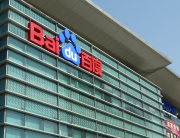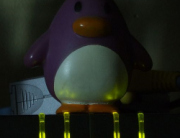Keeping Google a place of order and free of scammers is an ongoing battle, and Google says last year it pulled more than 350 million bad ads from its systems – an increase of 59 percent from the 224 million it cleaned up in 2012. Google is, almost by definition, ever-expanding so these figures may not come as a massive shock; but it appears that for the first time the number of bad advertisers shrank substantially from over 850,000 in 2012 to more than 270,000 in 2013. This comes as more of a surprise when that number had ticked up 8 percent from 2011 to 2012.
Google blacklisted more than 200,000 publishers and turned away more than 3 million attempts to join AdSense. 250,000 publisher accounts were also spotted violating Google’s policy, including 5,000 for copyright policy violations. That’s up over 25 percent from 2012. Interestingly Google also blacklisted some 10,000 ads from sites promoting get rich quick schemes.
Director of Ads Engineering, Mike Hochburg, explained, “In part, we attribute this decline to scammers — counterfeiters, for example — being thwarted by our safety screens and searching for less-secure targets.” In 2013, Google banned roughly 14,000 advertisers for trying to sell counterfeit goods. That’s a drop of 80 percent from 2012. Google says that attempts to push counterfeit goods on AdWords dropped by 47 percent in 2012 and 82 percent in 2013. User complaints about these types of ads fell by 85 percent in 2012 and another 78 percent in 2013. Hochburg also said “We’ve allocated substantial technical, financial, and human resources to stopping bad advertising practices and protecting users on the web. Hundreds of our engineers, policy experts and others have dedicated their careers to this work.”
As the industry for downloadable toolbars and ‘apps’ grows so does Google’s emphasis on keeping it a clean place – yet in April last year the company said they received over 100,000 complaints about these types of malicious software, some of which loads malware onto user’s machines in subtle and unnoticeable ways.
Last June, Google responded to claims made by the National Association of Attorneys General (NAAG) that it was stalling in its efforts to block ads from bad pharmacies – sometimes referred to as “rouge pharmacies” – even after settling a suit with the Department in Justice over allowing various Canadian pharmacies to target the keywords of and advertise illicit pharmaceutical sales without prescriptions (such as “oxycodone no prescription”) for a combined total of $500 million in 2011. The company said they had blocked some 3 million bad ads from pharmacies alone in the previous two years. In 2013 they had blocked 2 million such ads in 2013 alone.









